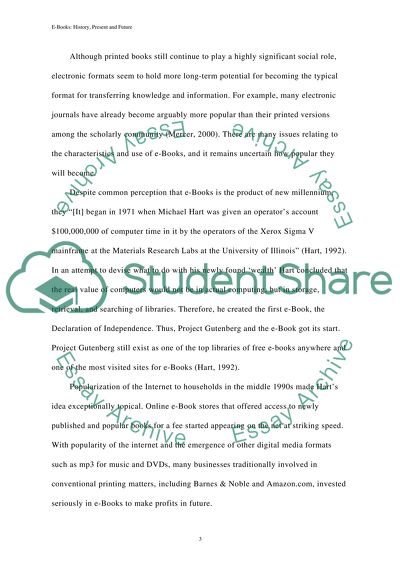Cite this document
(“E-books in todays world and their future Essay Example | Topics and Well Written Essays - 3500 words”, n.d.)
Retrieved from https://studentshare.org/technology/1501320-e-books-in-todays-world-and-their-future
Retrieved from https://studentshare.org/technology/1501320-e-books-in-todays-world-and-their-future
(E-Books in Todays World and Their Future Essay Example | Topics and Well Written Essays - 3500 Words)
https://studentshare.org/technology/1501320-e-books-in-todays-world-and-their-future.
https://studentshare.org/technology/1501320-e-books-in-todays-world-and-their-future.
“E-Books in Todays World and Their Future Essay Example | Topics and Well Written Essays - 3500 Words”, n.d. https://studentshare.org/technology/1501320-e-books-in-todays-world-and-their-future.


